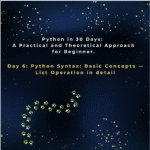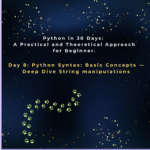Introduction
Welcome to Day 7! Over the past few days, you’ve learned about the fundamental building blocks of Python: data types, strings, and lists. Today, we’ll take a major step forward by learning how to organize and reuse your code using Python functions.
A function is a block of organized, reusable code that is used to perform a single, related action. They are the cornerstone of writing efficient and readable programs, helping you follow the Don’t Repeat Yourself (DRY) principle. Writing Python functions allows you to break down complex problems into smaller, manageable chunks, making your code easier to debug and maintain.
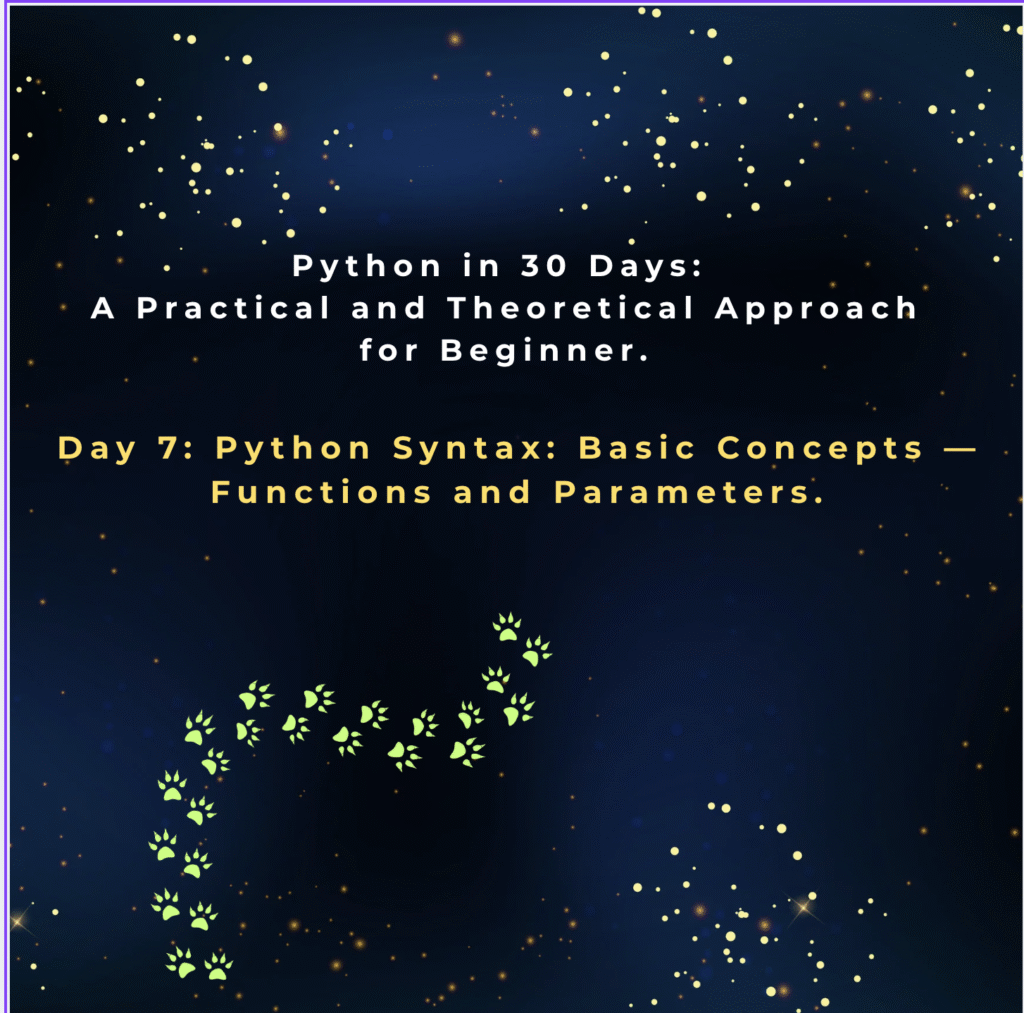
Defining and Calling Python Functions
You define a function using the def keyword, followed by the function’s name and parentheses (). The code to be executed by the function is placed in an indented block below the definition. Proper indentation is a critical part of Python syntax that defines the function’s body.
SYNTAX:
Pythondef function_name(parameters):
"""
Optional: This is a docstring. It explains what the function does.
"""
# Code to be executed
# ...
Let’s look at a simple example:
Python
# Defining a function named 'greet'
def greet(name):
print(f"Hello, {name}!")
# Calling the function and passing an argument
greet("Tom") # Output: Hello, Tom!
In this example, we defined a Python function called greet that takes a name as input. When we call the function using greet("Tom"), the code inside the function is executed.
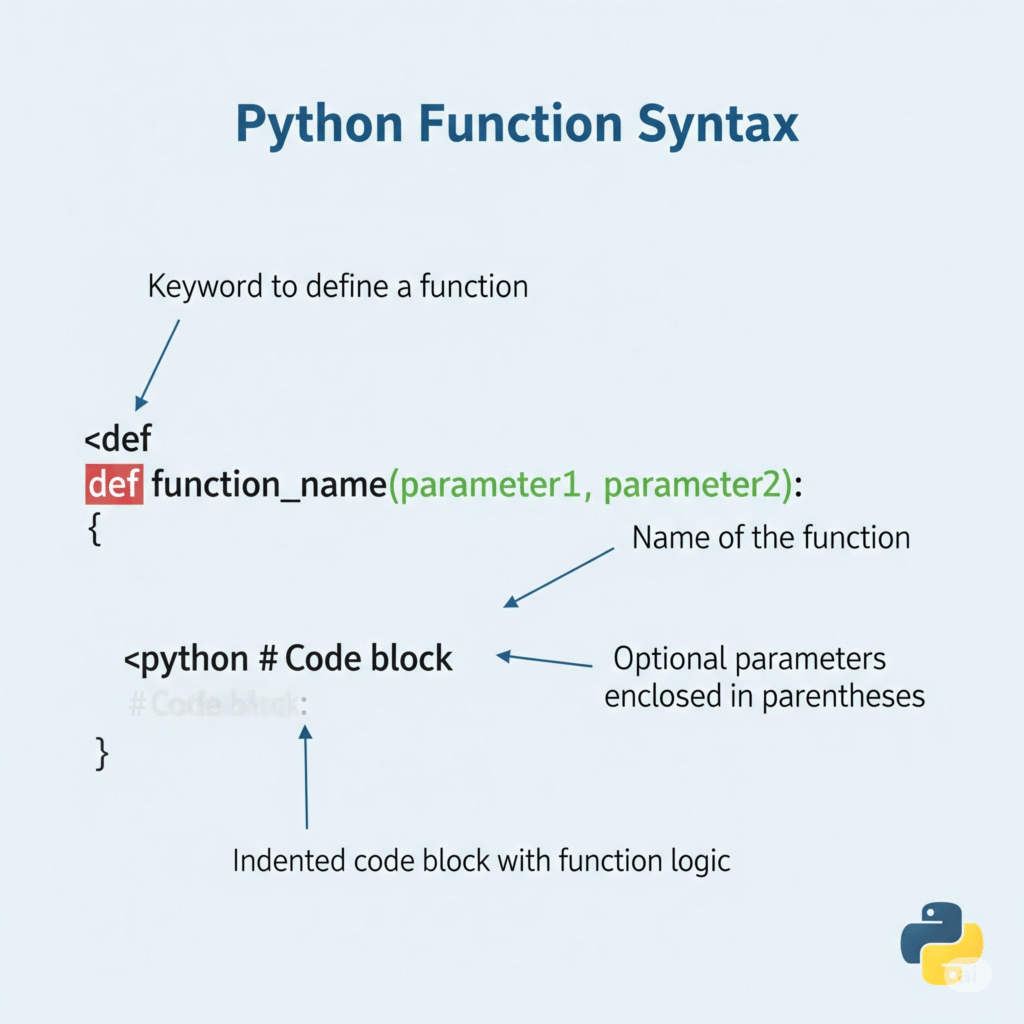
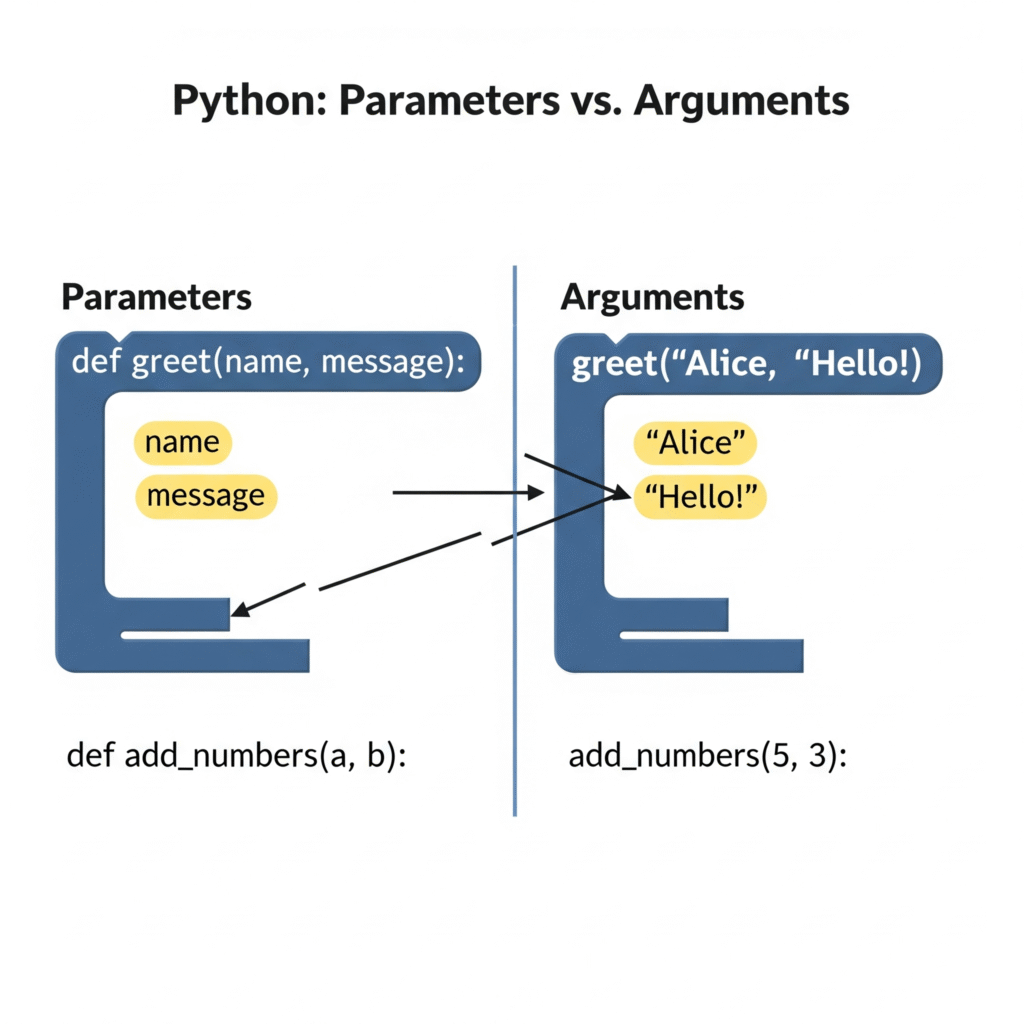
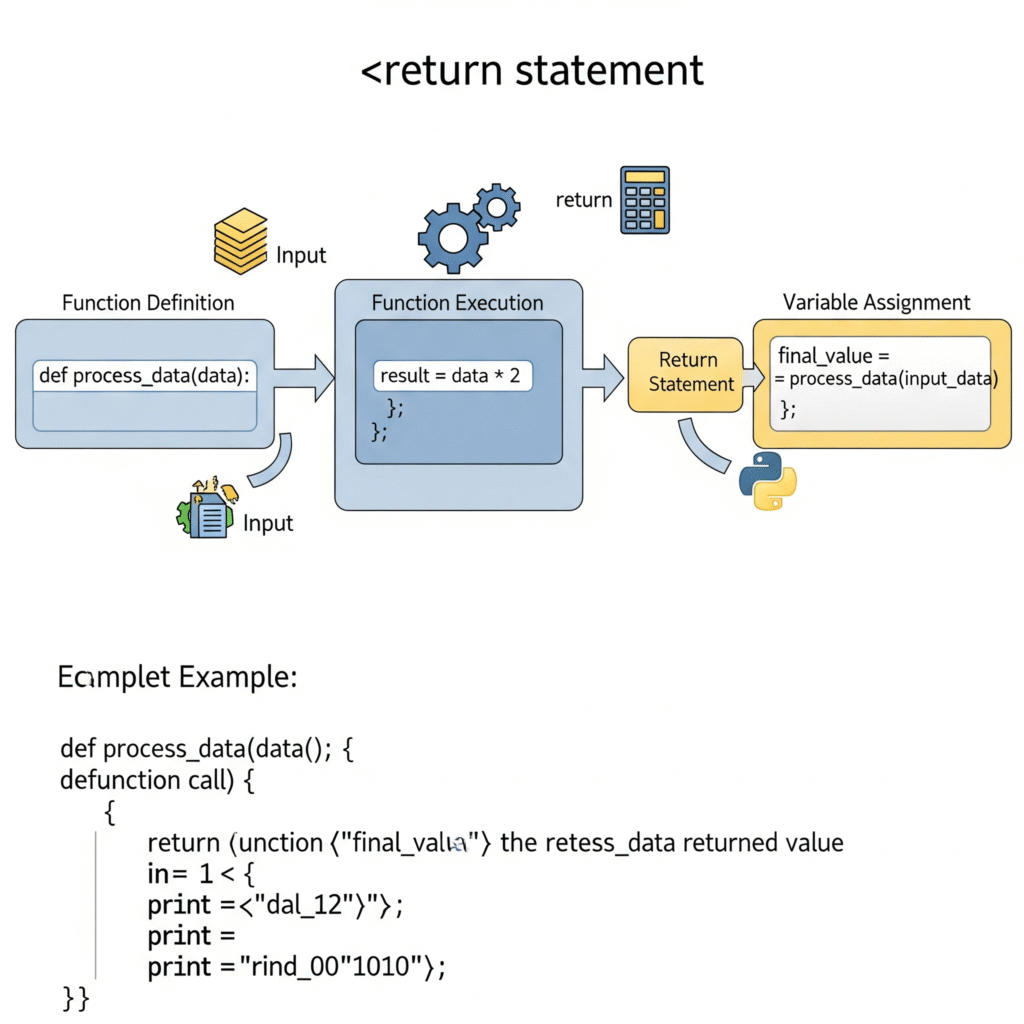
Parameters vs. Arguments
A common point of confusion for beginners is the difference between parameters and arguments. While they are closely related, they are not the same thing. Understanding this distinction is key to mastering Python functions.
- Parameters: These are the placeholders you define in your function’s definition. They are the variables listed inside the parentheses of the
defstatement. In ourgreetexample,nameis the parameter. It’s an internal variable that exists only within the function’s scope. - Arguments: These are the actual values you provide when you call the function. They are the values you pass into the function to be used by the parameters. In our
greet("Tom")example,"Tom"is the argument. The value"Tom"is assigned to thenameparameter when the function is executed.
Functions with Multiple Parameters
You can define Python functions with as many parameters as you need. Just separate them with a comma. By default, arguments are matched to parameters in the order they are provided, a concept known as positional arguments.
Python# Defining a function with two parameters
def introduce(name, age):
print(f"Hello, my name is {name} and I am {age} years old.")
# Calling the function with two positional arguments
introduce("Tom", 25) # Output: Hello, my name is Tom and I am 25 years old.
A powerful alternative is to use keyword arguments, where you explicitly name the parameters when you call the function. This makes the function call more readable and allows you to pass arguments in any order.
Python# Calling the function with two keyword arguments
introduce(age=25, name="Tom") # Output: Hello, my name is Tom and I am 25 years old.
The return Statement
So far, our Python functions have simply printed a value to the console. However, a function can also process data and return a value that can be used later in your code. You do this using the return statement. This is a powerful feature for writing functions that produce a result without necessarily printing it. If a function doesn’t have a return statement, it will return None by default.
Python# Defining a function that returns a value
def get_sum(a, b):
total = a + b
return total
# Calling the function and storing the returned value in a variable
result = get_sum(10, 5)
print(result) # Output: 15
You can even return multiple values by separating them with a comma. Python will automatically package them into a tuple.
Pythondef get_min_and_max(numbers):
return min(numbers), max(numbers)
scores = [85, 92, 78, 95]
min_score, max_score = get_min_and_max(scores)
print(f"The minimum score is {min_score} and the maximum score is {max_score}.")
# Output: The minimum score is 78 and the maximum score is 95.
Summary
Today, you learned the absolute fundamentals of writing Python functions. You now know how to:
- Define a function using the
defkeyword and understand the importance of indentation. - Understand the key difference between Python parameters and arguments.
- Create functions that take multiple inputs using both positional and keyword arguments.
- Use the
returnstatement to get a value or multiple values back from a function, which is essential for writing reusable code.
This knowledge is a crucial step toward writing more modular, efficient, and reusable code.
The journey of learning what Python is is an exciting one, and this “30 Days of Python” series is designed to be your roadmap. Happy coding!

Advanced Hydration & Detox Strategies for Lasting Wellness
Introduction Are…
Hydration Tips & Natural Detox: The Essentials for a Healthier You
Introduction In…
Hydration & Detox: The Essentials for a Healthier You
Introduction In…





